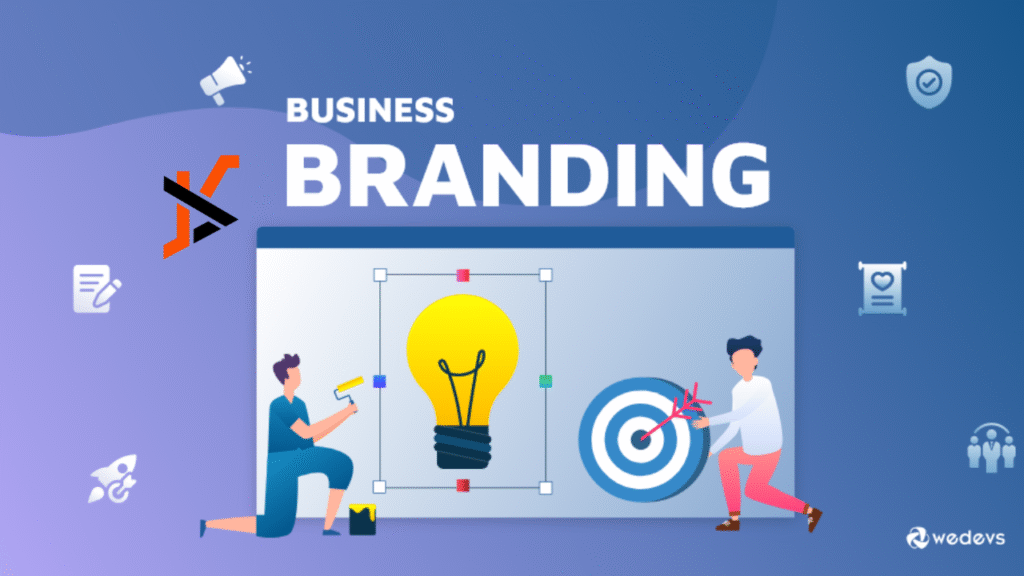In today’s saturated technology landscape, superior product capabilities alone no longer guarantee market success. With thousands of companies competing for attention and many employing remarkably similar messaging strategies, organizations that achieve sustainable growth are those that establish authentic, differentiated brand identities that resonate with their target audiences.
Effective branding transcends superficial marketing tactics. It requires a fundamental commitment to clarity, authenticity, and strategic consistency. Whether operating as an early-stage startup or an established enterprise, your brand identity serves as the primary differentiator that influences purchasing decisions and drives customer loyalty.
The following framework outlines five core principles for strategic branding for tech firms that generates measurable business impact.
1. Establish Clear Value Proposition Through Simplified Messaging
The foundation of effective branding lies in articulating your core value proposition with precision and clarity. Many technology companies undermine their market position by employing unnecessarily complex terminology and industry jargon that obscures rather than illuminates their fundamental purpose.
Mission statements filled with abstract concepts such as “leveraging synergistic solutions to optimize enterprise ecosystems” fail to communicate tangible value to prospective customers. Instead, successful organizations focus on clearly articulating the specific problems they solve and the measurable benefits they deliver.
For example, rather than describing your offering as “an innovative SaaS platform for operational excellence,” consider stating “software that helps restaurants reduce food waste by 30% through automated inventory management.” This approach immediately communicates both the target market and the specific value delivered.
According to branding consultancy ikon, effective mission statements address a fundamental question: “What problem are we solving, and why should our target audience care?” Organizations that can articulate their purpose in a single, comprehensible sentence experience improved performance across multiple business functions, including talent acquisition, marketing effectiveness, and product development focus.
Implementation Strategy: Develop a concise value proposition statement that explains your offering in terms accessible to individuals outside your industry. Test this messaging with representatives from your target market to ensure clarity and resonance before implementing across all communications channels.
2. Prioritize Authenticity Over Perfection
Authentic brand positioning requires honest representation of your organization’s current capabilities, limitations, and development trajectory. In an era of heightened skepticism toward corporate messaging, particularly in technology sectors, customers increasingly value transparency and genuine communication over polished but potentially misleading presentations.
Early-stage companies that attempt to project the scale and sophistication of established enterprises often undermine their credibility. Similarly, organizations that fail to acknowledge product limitations or implementation challenges create unrealistic expectations that can damage long-term customer relationships.
This principle holds particular significance for companies operating in regulated industries such as financial services, healthcare, or cybersecurity, where trust serves as a fundamental prerequisite for customer adoption. Successful organizations in these sectors emphasize the expertise and experience of their teams while maintaining transparent communication about their solutions’ scope and limitations.
Implementation Strategy: Publish case studies or thought leadership content that honestly examines challenges your organization has encountered during product development or implementation. Focus on demonstrating problem-solving capabilities and commitment to continuous improvement rather than presenting an unrealistic image of flawless execution.
3. Maintain Visual and Messaging Consistency Across All Touchpoints
Brand consistency encompasses both visual design elements and messaging tone across all customer-facing communications. While aesthetic excellence is not required, professional presentation that maintains coherence across all platforms and materials is essential for establishing credibility and trust.
Inconsistent brand presentation—such as a modern website paired with outdated presentation materials—creates confusion about your organization’s attention to detail and overall competence. Customers form impressions based on these seemingly minor inconsistencies, which can influence their confidence in your ability to deliver on more significant commitments.
Implementation Strategy: Develop comprehensive brand guidelines that specify visual elements, messaging tone, and communication standards. Regularly audit all customer touchpoints to ensure alignment with these standards, and establish processes for maintaining consistency as your organization grows and evolves.
4. Develop Industry-Specific Positioning Strategies
Different technology sectors require distinct approaches to brand positioning based on their unique customer expectations, regulatory requirements, and competitive dynamics. B2B enterprise software companies must emphasize scalability, integration capabilities, and support infrastructure, while consumer-facing applications should prioritize user experience and accessibility.
Understanding these tech-specific branding strategies enables more effective resource allocation and messaging development. Companies that attempt to address multiple market segments simultaneously often dilute their brand impact and fail to establish strong positioning in any particular area.
Implementation Strategy: Conduct comprehensive analysis of your primary target market’s specific needs, communication preferences, and decision-making processes. Develop tailored messaging strategies and content formats that align with these requirements while maintaining consistency with your core brand identity.
5. Implement Systematic Brand Performance Measurement
Effective branding requires ongoing assessment and optimization based on measurable outcomes rather than subjective preferences. Establish key performance indicators that track brand awareness, customer perception, and business impact to guide strategic decisions and resource allocation.
Regular brand audits should evaluate both quantitative metrics such as website traffic, engagement rates, and customer acquisition costs, as well as qualitative feedback regarding brand perception and competitive positioning. This data-driven approach enables continuous refinement of brand strategy based on actual market response rather than internal assumptions.
Implementation Strategy: Develop a comprehensive brand measurement framework that includes both leading indicators (such as brand awareness and engagement metrics) and lagging indicators (such as customer acquisition and retention rates). Establish regular review cycles to assess performance and identify opportunities for optimization.
Conclusion
Successful technology companies recognize that brand development is not a secondary consideration but a fundamental business strategy that directly impacts market position and financial performance. By implementing these five core principles—clear value proposition, authentic positioning, visual consistency, industry-specific strategies, and systematic performance measurement—organizations can establish differentiated brand identities that drive sustainable competitive advantage.
The most effective brands in technology are not necessarily the most creative or visually striking, but rather those that consistently communicate clear value to their target audiences while maintaining authentic, transparent relationships with customers and stakeholders.

